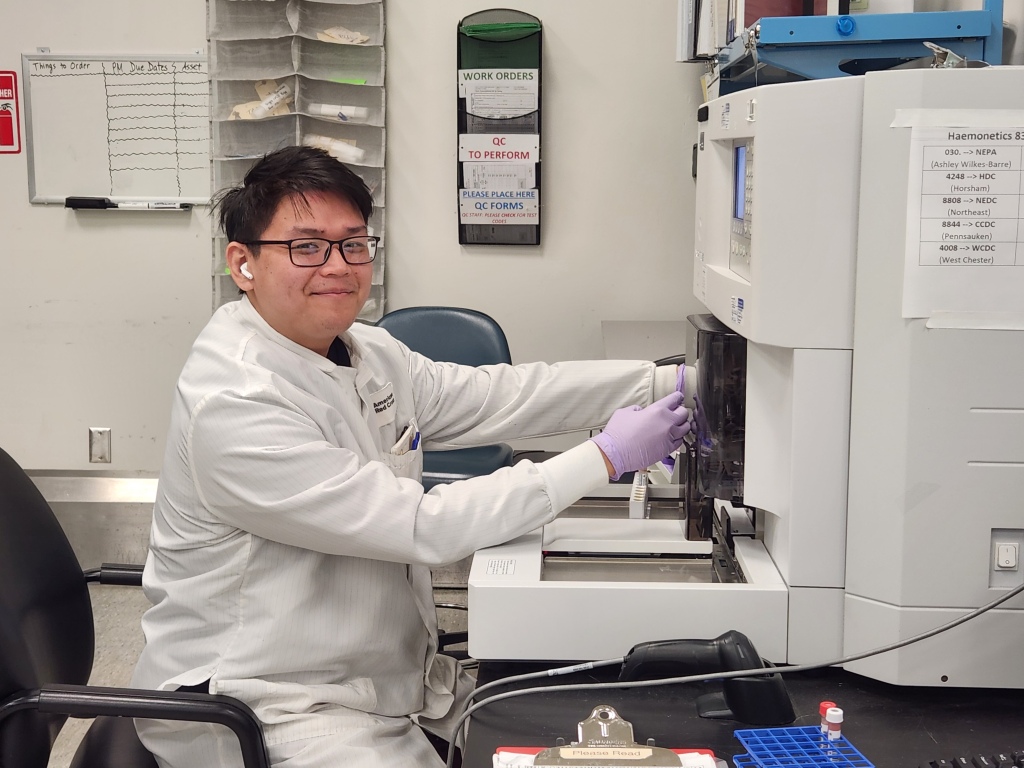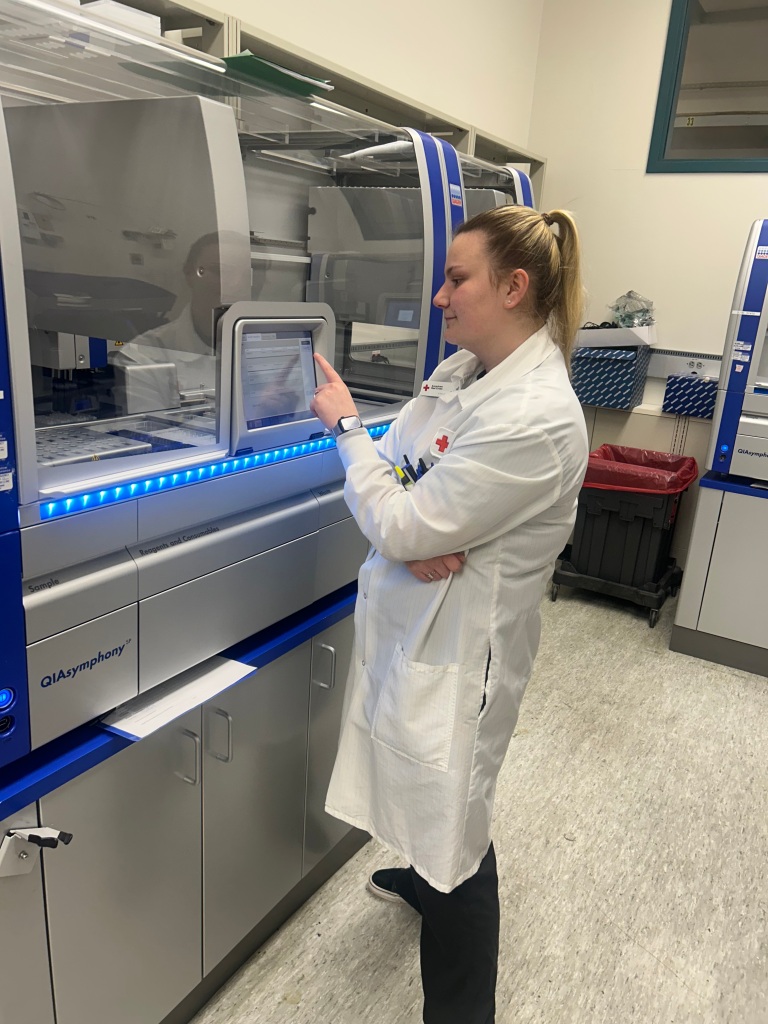By Alana Mauger
The American Red Cross joins organizations across the U.S. to celebrate the 49th Medical Laboratory Professionals Week, recognizing clinical and public health laboratory professionals for their contributions to the health of our communities. The Red Cross employs more than 2,200 laboratory and manufacturing team members who work at 146 labs and product distribution facilities across the country. Together, they process, test and distribute approximately 6.4 million blood products each year.
Philadelphia is home to two national Red Cross laboratories – The National Reference Laboratory for Specialized Testing (NRLST) and The National Molecular Laboratory (NML) – as well as one of five Human Leukocyte Antigen (HLA) Testing Labs and one of 45 Immunohematology Reference Laboratories (IRL) in the U.S. All blood products collected in Southeastern Pennsylvania, New Jersey and Delaware are processed in Philadelphia’s Manufacturing Lab, which is one of 22 in the country.
Meet some of the extraordinary professionals who work in our Philadelphia laboratories.
Potent Wu-Zheng
A former Emergency Medical Technician (EMT), Potent Wu-Zheng has worked at the Red Cross as a Quality Control laboratory supervisor for about two years. In that role, he oversees the manufacturing of blood and platelet products.
He shared, “What I like most about my job is the satisfaction of manufacturing products that help save lives.”
Nayara Visco
Nayara Visco is a laboratory assistant in the National Reference Laboratory for Special Testing (NRLST). In that role, she is responsible for receiving patient samples, overseeing reagents and laboratory supplies and distributing patient reports. Before coming to the Red Cross, Nayara worked for a government health department in Brazil.
“I feel a sense of purpose and fulfillment knowing that my work directly contributes to saving lives in an organization with such great values like the American Red Cross,” she shared.
Daria Buono
Daria Buono is a lead technologist in the National Molecular Laboratory, where she oversees the workflow of the molecular lab, handles orders from hospitals and writes patient reports. Having a background in biochemistry and chemistry, Daria started at the Red Cross as a molecular technologist before moving into her current role.
“I like the impact that we make as a lab on the real world and patients,” she said. “I enjoy the oversight of lab functions to make sure we are meeting quality standards.”
Career Opportunities
The American Red Cross has a variety of career opportunities in Laboratory Services and Manufacturing. To learn more about available roles, visit the career center at redcross.org.












